Table of Contents
Updated October 2024
Spending a day in Monument Valley promises a truly magical experience surrounded by breathtaking landscapes and iconic rock formations. Monument Valley Tribal Park is along the Arizona/Utah border. Although this is not part of the Utah 5, this park should be consider it part of the grand circle tour. The Grand Circle tour is a popular itinerary that encompasses several iconic national parks and other natural landmarks in the southwestern United States. While Monument Valley is not typically included in the classic Grand Circle tour, it is often added as an additional stop or extension because of its proximity to other popular destinations in the region.

Monument Valley as a Tribal Park was established in 1958 and encompasses some 30,000 acres. Monument Valley is renowned for its towering sandstone buttes on the massive Colorado Plateau. Some rise from the desert valley floor 400 – 1,000 feet.
This post may contain affiliate links, meaning if you purchase something through one of these links, we may earn a small commission at no extra cost to you! Read the full disclosure policy here.
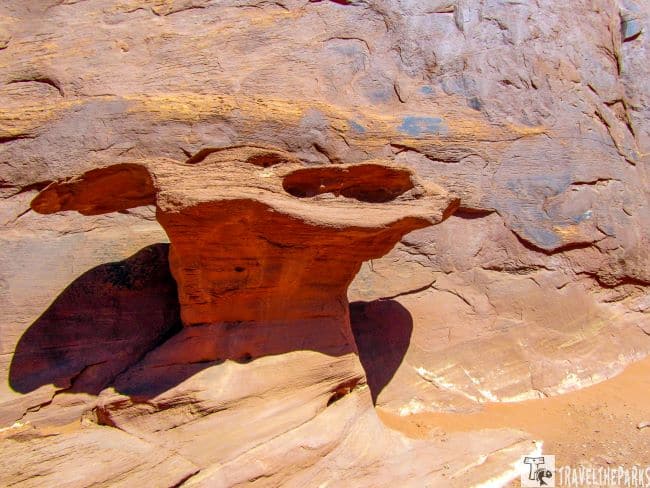
How Do I Get to Monument Valley?
Driving to Monument Valley is a popular choice as it allows for flexibility and the opportunity to explore the surrounding area at your own pace. The main entrance to Monument Valley Navajo Tribal Park is off Highway 163. The park is approximately 5.5 hours north of Phoenix, Arizona, and about 2.2 hours southeast of Page, Arizona,. It’s important to note that some parts of the road leading to Monument Valley may be unpaved, so consider the suitability of your vehicle.
If you prefer to fly to the area, the closest major airports are Phoenix Sky Harbor International Airport (PHX) or McCarran International Airport in Las Vegas (LAS). From there, you can rent a car and drive to Monument Valley. The drive from Phoenix takes about 5.5 hours, while the drive from Las Vegas takes approximately 6 hours.
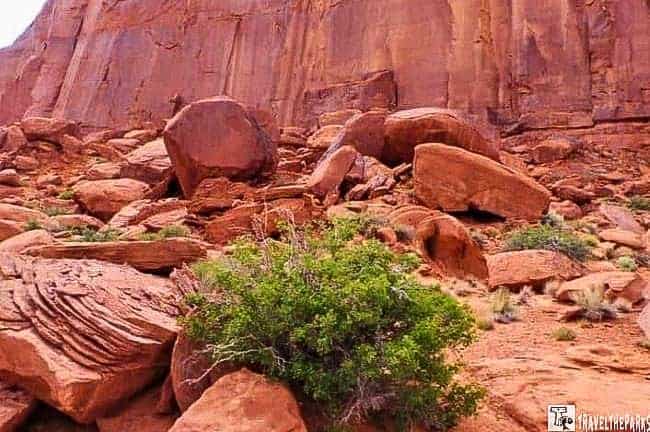
What you need to Know before your Visit To Monument Valley
These landmark buttes and mesa here on the Navajo Reservation are some most photographed in the world. Carved by wind and water for over millions of years, these rock formations are spectacular. The Navajo name is Tse’Bii’Ndzisgaii, meaning “valley of the rocks”. The Navajo People are the largest population of indigenous Americans in the US. Exploring the American southwest, with its red rocks and water-carved canyons, is all about appreciating the wide-open spaces and the way the sky lights up the mesas throughout the day. Unlike Mesa Verde, there are no cliff dwellings here.
- Visitor Center: Open daily from 8:00 AM to 5:00 PM (Mountain Standard Time). Peak Season (April–September): Open daily from 7:00 AM to 7:00 PM; last entry at 4:30 PM. Off-Season (October–March): Open daily from 8:00 AM to 5:00 PM; last entry at 2:30 PM.
- Admission Fees: $8 per person, per day. National Park Passes: Not accepted; the Navajo Nation operates the park. Backcountry Permits: Required for hiking or camping off designated trails; available at the Visitor Center
- Best Time to Visit: Peak Season (April–September): Ideal for full access to the scenic drive and guided tours. Expect warmer temperatures and more visitors. Off-Season (October–March): Quieter with cooler temperatures; some services may have reduced hours.
- Leashed Pets: Allowed on the 17-mile Scenic Drive and the Wildcat Trail, provided they are kept on a leash no longer than six feet.

Exploring the Enchanting Southwest: a Journey through Kayenta
Kayenta is the gateway to Monument Valley Navajo Tribal Park. Kayenta is a small town on Hwy 163 and lies within the Navajo Reservation. Tourists from Monument Valley stay at motels and fast-food restaurants in town. Construction stops interrupted the drive from Page, and we were weary and tired. It’s a convenient place to stock up on supplies before heading to Monument Valley. We briefly stopped to enjoy a quick lunch before heading into the park for the evening. Kayenta has a Burger King, Sonic Drive-In, Subway restaurant, and McDonald’s. Sonic seemed to be the easiest to get into and back out again. From Kayenta, we drove north on Highway 163 for 20 miles. On the right, we reached the entrance to Monument Valley Navajo Tribal Park.
NOTE: An important note here is that Arizona does not observe daylight savings time, but the Navajo reservation does. Be sure to change your watch, otherwise you may be late for your tour check-in.
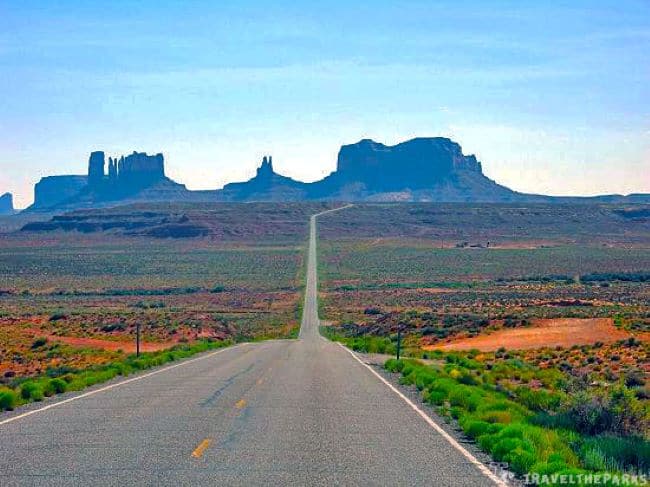
Forrest Gump Point: A Journey to an Iconic Film Location in Monument Valley
You can’t drive Scenic Highway 163 towards Monument Valley without a stop at the one-of-a-kind iconic spot. “Forrest Gump Point” is a nickname given to a scenic spot along Highway 163 near mile marker 13 between Monument Valley and Mexican Hat. The location gained its name because of its appearance in the popular film “Forrest Gump,” where the main character, Forrest Gump (Tom Hanks), finally ends his cross-country run. This area was a prominent setting for many of the John Ford/John Wayne Westerns and other films up through the 1960s. The iconic spot provides a picturesque view reminiscent of the American Southwest. Many visitors stop at this point to take photos and recreate the famous scene from the movie.

There are a few places to pull over and park your car on either side of the road. It is very typical to take a picture on the road, just be mindful of traffic. Luckily, the road was quiet so we could stand in the middle and take a photo with monument valley in the background. We noted several vendors sold handmade Navajo jewelry on the roadside, and the Forrest Gump sign sat in an open field.
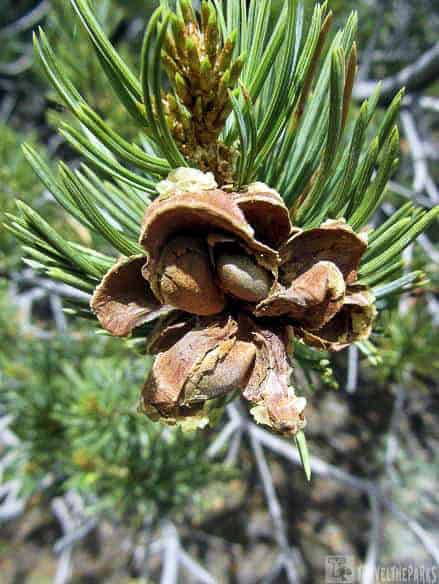
Where to Stay on Your Visit to Monument Valley
Where can one find lodging amidst this expansive and extraordinary landscape? Within and around Monument Valley, several accommodation choices are available. I advise you to secure your lodging well ahead of your visit, as availability may be limited during peak travel periods. Be sure to verify that your selected accommodation includes the essential amenities and services you require, such as internet access, dining facilities, and guided tour options, by reviewing the specific details provided.

What does the Awe-inspiring View Hotel have to offer?
The Monument Valley View Hotel is a Navajo owned business within the Navajo Nation and the Monument Valley Tribal Park. I booked a year in advance. The hotel is at a point where each room can view the Mitten Buttes directly from the room window. There are 3 floors to this hotel and all rooms overlook the 3 famous monuments and beyond. The View, although it is quite pricey, I knew I was paying for the proximity to ‘the views’. Nonetheless, watching sundown and sunrise over the monuments from our deck made it well worth the price. Staying at the view makes it easier to spend a day in Monument Valley.
The rooms have a southwestern native style, are spotless, have comfortable beds and had all the basic amenities, including a microwave and refrigerator. Large bathrooms – organic toiletries and huge towels. Bonus: you get Wi-Fi as a guest of the hotel. No public Wi-Fi or extremely limited cell access at monument valley. Since our previous visit, they have constructed cabins that might be more suitable for you if you prefer to be away from the hustle and bustle.
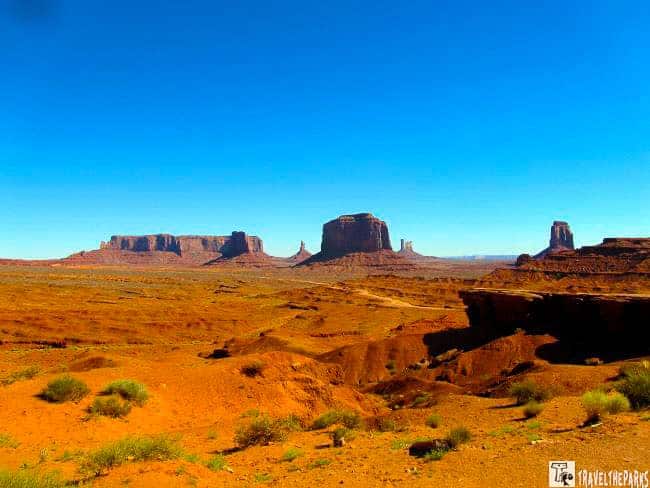
Watch a sunrise or sunset in this Mysterious Valley
One of the best things about staying here is the views of the valley. We started our day by witnessing the awe-inspiring sunrise over the valley. Often called the golden hour, sunrise casts a magical glow on the rock formations, creating an ethereal atmosphere.The play of light and shadows on the towering buttes and mesas creates a stunning spectacle.

Spend time in The View hotel Gift Shop
The service was great, with the staff genuinely interested in helping the guests. The hotel lobby is so big & dramatic with kachinas placed around the central fireplace that goes all the way from the first floor to top of the second floor, & beautiful sculptures, & beautiful woven rugs displayed on walls.There is a gift shop with authentic pottery, jewelry, rugs, and other art. If you stay at the hotel, you get a voucher for 20 dollars off merchandise, it already marked most items down by 50%. We purchased a few jewelry items and a kachina to add to my collection.
TIP: there is a small museum on the opposite side of the gift shop, which was very interesting and very informative playing a documentary about the Navajo code talkers in WW2. They have since moved it to its own museum in Kayenta. There is also a Navajo Code Talkers Exhibit in the Burger King.
Navajo Code Talkers Exhibit Museum
We found the Navajo Code Talkers Exhibit was an engaging display. The displays offer a fresh perspective on the invaluable role played by these extraordinary individuals in military communications. Listening to the stories from the elders’ viewpoint was interesting.

Watch The Unique Nightly Movie at the View
Every evening the hotel shows old Western Movies outdoors. Many shot in Monument Valley. This evening the hotel plays “The Searchers”, with John Wayne. They project the movie onto the wall of the hotel like at a drive-in, and we watched from our room balcony. The scenic views are nothing short of spectacular, as are the sunrise and sunset over the Valley.
TIP: Get there before it gets dark to snap some exceptional sunset shots and make sure to wake up early for a stunning sunrise view.
If you’re into stargazing, this is a magnificent spot because of the virtually total lack of lights. At night, the sky show was out-of-this-world. It seems rare to see the milky way these days and in this remote area, with almost no artificial light, the stars seemed close enough to touch.

For a more immersive experience: The View Campground
Camping is also an option for those that would like a more rustic adventure. The View Campground. The campground is inside the Monument Valley Tribal Park. You pay the entry fee and proceed to the top of the hill. The campground is on the left-hand side of the visitor center and The View Hotel. All the RV/trailer spots are large, level, well kept pull-through sites. No hook-ups were available. The spaces are long enough to leave your vehicle hitched up. The tent sites have the best view of the campground, as they are on the side of the hill looking straight at the Mittens.

Goulding’s: A Legacy of Family and Adventure in Monument Valley
Harry Goulding and his wife, Leone, whose nickname was Mike, came to Monument Valley in the early 1920s. A sheep trader, Harry, was looking for a new business opportunity and a place to call home. Monument Valley had once been part of the Paiute Indian Reservation. They moved it when the reservation land opened up for sale. The Gouldings purchased a substantial plot of land and set up a Trading Post. They conducted business with the local Navajo people, who traded hand-crafted items like rugs and jewelry and pottery in exchange for food and other goods. After living and working in tents for several years, the Gouldings constructed a permanent building, which currently houses the Goulding’s Trading Post and Museum.

During the Great Depression, the Navajo Reservation suffered immensely. Harry heard of a movie production company scouting for locations to film in the Southwest and believed bringing a movie production to Monument Valley would help the local Navajos with much-needed income. With their last $60, Harry and Mike took a trip to Hollywood, California, and persuaded the famous director John Ford to come to Monument Valley to film his 1939 classic “Stagecoach” starring a young actor named John Wayne. The rest is history. Over the years, the Gouldings continued to host movie crews, photographers, artists, and tourists.
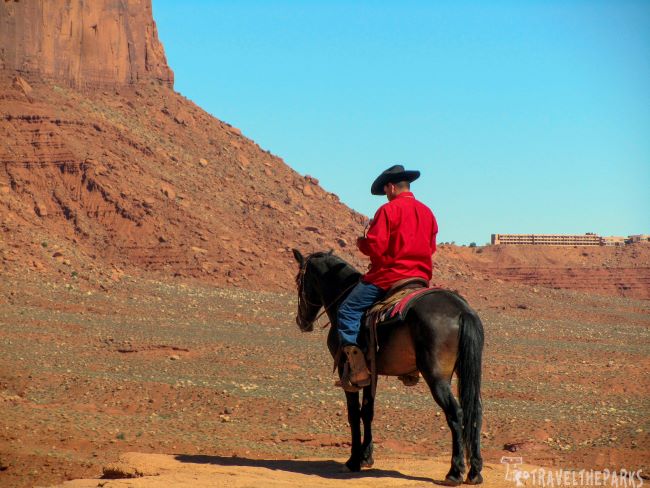
Goulding’s Lodge and Campground: Your Access to Monument Valley’s Majestic Beauty
They built the Lodge and a dining facility to accommodate their guests. Since then, Goulding’s Lodge has expanded to host thousands of visitors from all over the world who come to admire Monument Valley. The Gouldings retired in 1962 after Knox College purchased the lodge and trading post. Harry died in 1981, Mike in 1992. The 63 guest rooms at the primary lodge offer breathtaking views of Monument Valley’s iconic landmarks, including Eagle Mesa, Brigham’s Tomb, King on his Throne, and Stagecoach. Additionally, visitors can explore the filming location for the famous lightning storm sequence from the classic film “She Wore a Yellow Ribbon.”

Goulding’s Lodge has become more than just a place to stay; it is a tribute to the Goulding family’s vision and their dedication to preserving the beauty of Monument Valley. The lodge features a museum showcasing artifacts, photographs, and memorabilia from the early days, allowing visitors to step back in time and appreciate the family’s impact on the area.
Amenities include a flat-screen TV with 200 plus Dish Network channels, min-refrigerator, iron and ironing board, individual climate control and Keurig coffee maker. The lodge also features the Stagecoach Dining Room, historical museum, gift shop, fitness room, indoor heated swimming pool, outdoor sun deck. A gas station and car wash, grocery store and access to an excellent fleet of jeeps with tour guides.

Delve into the Rich History of Monument Valley at Goulding’s Museum in the Heart of the Southwest
Step into the past and immerse yourself in the stories, artifacts, and memorabilia that shaped this iconic destination. The museum is worth taking some time to view on the property for a small fee.
Goulding’s Museum features a diverse collection of exhibits that chronicle the captivating history of Monument Valley. Here you see the pioneering spirit of Harry and Mike Goulding, the couple who established the trading post that would later develop into Goulding’s Lodge. It is important to understand their interactions with the Navajo people, the influence of Hollywood filmmakers, and the lasting impact of their collaboration.

Experience the fascinating intersection of Monument Valley and the film industry. We learned about the iconic movies that were filmed in this mesmerizing landscape. Including collaborations between Harry Goulding and legendary director John Ford. It was fascinating to discover how Monument Valley became a beloved backdrop for countless Western films. Many leaving an indelible mark on cinematic history. Perusing the vintage John Wayne era memorabilia, movie posters and props added a touch of nostalgia to our museum experience. We spent an hour looking over the artifacts and the gift shop.

Starry Nights and Campfire Stories at Goulding’s Campground
Pitch your tent or park your RV in a picturesque setting surrounded by the breathtaking landscapes of Monument Valley. Wake up to the sight of towering rock formations, glowing mesas, and expansive desert views. The campground provides an unparalleled connection to the stunning natural beauty of the American Southwest.
Nestled in the heart of this iconic destination, Goulding’s Campground offers a unique opportunity to connect with nature and create lasting memories. The campground is 5 miles from the entrance to Monument Valley Tribal Park. Tucked away and surrounded by red bluffs, it is a beautiful area. The campground has pull-through sites with full hookups. However, the spacing between the sites in the campground is not wide. They offer a free shuttle to the restaurant and theater area. They show nightly John Wayne movies here as well.
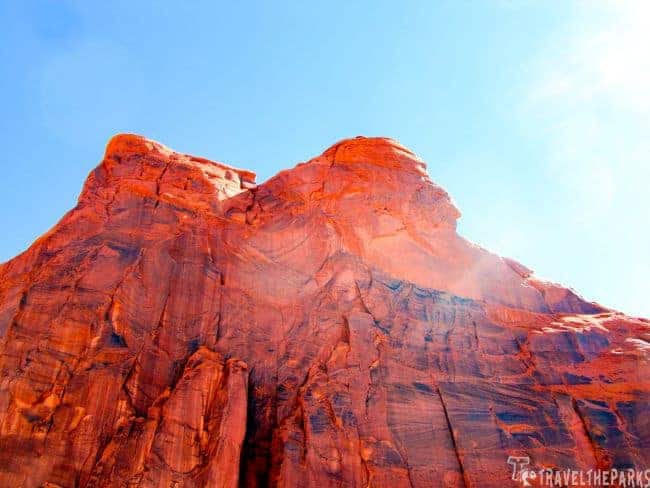
Where to Dine in Mythical Monument Valley
Though there may be constrained dining choices within Monument Valley itself, the surrounding region offers a diverse array of options to suit any taste. Whether you seek a fine dining experience with sweeping vistas or a casual, locally inspired meal, you’ll find ample opportunities to satisfy your appetite while immersed in the breathtaking beauty of this remarkable destination.
the View Restaurant: Savoring Culinary Delights amidst Monument Valley’s Breathtaking Beauty

The hotel has a restaurant serving some delicious Navajo cuisine. We arrived early for dinner at the View restaurant. They don’t take reservations. Because we had a reservation, we got seated immediately. Our table was near the wall of windows, giving us an expansive view of the valley. The View offers a complete menu of Navajo inspired dishes and classic American cuisine created by Navajo chefs.
The menu reflects a sophisticated combination of Le Cordon bleu culinary training with the unique heritage of Navajo cooking learned at the wood stoves of their grandmothers. The server was very helpful; she gave suggestions to help us determine our selections. We settled on starting with a sampler plate of Navajo dishes. The sampler included the famous green chili stew, sheep camp mutton stew, red chile pork posole and Navajo Fry Bread. The Fry bread is delicious with honey and powdered sugar.
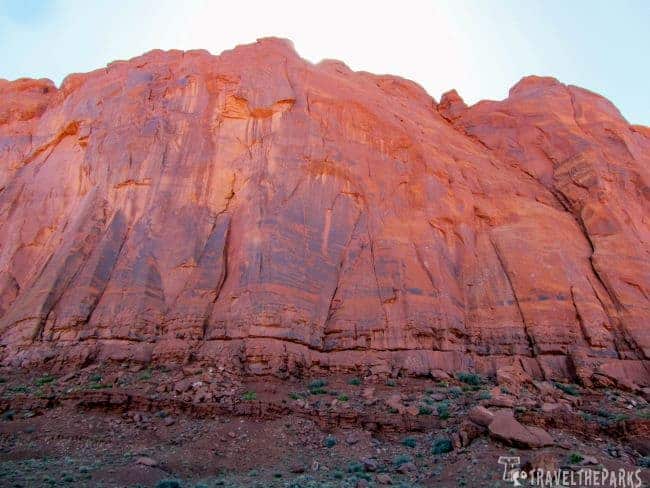
Delight in Delectable Navajo Cuisine: A Culinary Journey into Native Flavors
It was nice to experience some Navajo cuisine. The “world-famous green chili stew” was very good. More like a flavorful soup than a stew, but tasted healthy and delightful. The mutton stew was just like Barry’s grandma used to make. Although some may consider it bland, for us it tastes like home cooking. We loved all of them. We shared the Navajo taco, and it was wonderful, just enough food for two. The Navajo Taco sampler plate has four mini tacos with miniature Navajo fry bread, topped with fresh vegetables, and mild green chili. Remember, Navajo Nation is a dry nation-no alcohol. They do not allow beer and wine within the Navajo Nation borders. The service was friendly, courteous, and very efficient.

The Breakfast buffet is very good. We had the buffet at some other places in the national parks and they were expensive and they burned the bacon. But not here. It was excellent food. You can start your day with a breakfast buffet that offers a hearty selection of eggs, potatoes, biscuits and gravy, bacon, sausage, pancakes, fruits, muffins, yogurt, cereals, and juice. We asked to go back for yogurt for the road and the server gave it to us no problem. Our experience here was wonderful!!

Things to do in Monument Valley: Exploring the Majestic Tribal Park Loop
The entrance fee for the park is $5. You can self-drive the 17-mile tribal road as a loop. The loop is a one-way road, and there are multiple viewpoints where you can stop, take photos, and marvel at the natural wonders.
I would recommend having a heavy-duty vehicle, preferably 4 wheel drive. The road is unimproved, with a washboard in many places, and is dusty in the dry season. The cost is $20 for each vehicle. Consider taking a guided tour with a Navajo guide to gain deeper insights into the park’s history, culture, and geology. Most of the landmarks are only accessible by hiring a guide service.
One-day itinerary in Monument Valley? Tour with Navajo Spirit Tours
We did the Monument Valley Tour with Navajo Spirit Tours. It was the absolute highlight of our time in Monument Valley. They guided us on an amazing private jeep tour through the stunning red-spired formations of Monument Valley. The day was really special, the way it combined being immersed in the stunning and somehow humbling landscape of Monument Valley. What made our experience unique was the way Navajo Spirit tours weave the ways and understanding of the native people. You will gain insight into the Navajo people’s culture and history.

This morning, we meet our local guide, Larson Homer of Navajo Spirit Tours, and began our journey into the park. We took the Monument Valley Tour is about 2.5-3.0 hours long. The Valley View Road is a 17-mile loop that showcases the mesas, buttes, and tower formations. The silence and exceptional photography opportunities are unforgettable.
These tours will take you into the heart of the valley. Be sure to have a refillable water bottle to quench your thirst in the heat. In the summer, the hot dry air can take its toll if you don’t hydrate.

Stop #1: A Photographer’s Paradise Capturing the East and West Mitten Buttes
The first stop is the East and West Mitten Buttes look like hands, the thumbs are facing each other. The East and West Mitten Buttes are among the most recognizable features of Monument Valley. Standing tall and proud, they command attention with their imposing formations and sheer size. The mittens alone are so much larger—and overwhelmingly majestic—in person than in photographs. As we photographed the East and West Mitten Buttes, we were mindful of the delicate balance between enjoying the beauty and preserving the integrity of this remarkable site.
These buttes have flat tops, steep vertical sides and its height above ground is greater than its width. The East Mitten stands 6,226 feet, while the West Mitten rises 6,176 feet. Capturing these colossal mittens in photographs provides a sense of scale and grandeur.

Stop #2: Embracing the Splendor of Merrick Butte and Mitchell Mesa: A Visual Feast in Monument Valley
As we continued our exploration of Monument Valley, the next stop on your journey was the breathtaking Merrick Butte and Mitchell Mesa. According to legend, in 1879, they repeatedly warned the two men to keep out of the Monument Valley area, where Chief Hoskininni had a rich silver mine. The story has it they were both shot by irate Utes, the next year, at their campfire at the butte now called Mitchell. They killed Mitchell immediately, but Merrick lived to reach another butte three miles away where he died; Merrick Butte. They have never found the silver mine. We marvelled at the towering spires, sweeping mesas, and intricate formations that nature has sculpted over millions of years.

Stop #3: Discovering the Magnificence of Elephant Butte: A Towering Natural Marvel
The next stop along the unimproved dirt road is Elephant Butte. The magnificent rock formation resembles an elephant silhouette, providing visitors with a feeling of awe and wonder. As we approached Elephant Butte, the sheer size and remarkable forces of nature that have shaped it over millions of years struck us with awe. This butte rises over 1000 feet from the valley floor.
Elephant Butte’s distinctive shape immediately evokes images of a majestic elephant, its trunk raised regally. It took little imagination for us to see its long trunk frozen in red sandstone. The rock is very much in the shape of an elephant. The guide told us it is best photographed at dusk.

Stop #4: A Trifecta of Beauty at the Amazing Three Sisters
Standing side by side, the Three Sisters is over a 1000 feet. The Three Sisters stand united in the vast desert landscape. Their proximity to one another creates a sense of unity and symmetry, making for a visually stunning composition. The naturally eroded rock formations are said to resemble a Mother Superior, a Sister, and a tiny novice with a veil, proceeding toward the bulky cathedral. Alternatively, the Navajo story tells of a mother walking with her daughter, led by an uncle who uses a cane.

Stop #5: Historic John Ford’s Point
Legend has it, when John Wayne first set eyes on Monument Valley, he said: “So this is where God put the West”. John Ford’s Point holds a significant place in the history of filmmaking, as it served as a backdrop for many classic Western movies. Films such as “Stagecoach” and “The Searchers,” directed by John Ford himself, showcased the rugged beauty of Monument Valley to the world. Standing at this historic point allows you to immerse yourself in the atmosphere of those legendary film sets.
Classics like “Stagecoach” and “How the West Was Won” were filmed at John Ford’s Point, and more recent movies such as Johnny Depp’s “The Lone Ranger” have also been shot on location here. Beyond its role in the film industry, this historic site holds significance as a meeting place for Navajo leaders and early explorers.

Exploring Monument Valley’s Filmmaking Legacy
On the rocky overlook, a Navajo man on horseback, wearing a bright red shirt, strikes a pose reminiscent of iconic silver screen images, prompting tourists to reach for their cameras. As we stand at John Ford’s Point, we can imagine the cameras rolling, capturing scenes that have become legendary in the annals of filmmaking.
Vendors here offer an opportunity to purchase authentic Navajo crafts – handmade jewelry, pottery, weavings, and paintings. By supporting these local artisans, visitors can contribute to the preservation of Navajo traditions and help sustain their way of life.

Stop #6: Camel Butte: A Unique Landmark in Monument Valley’s Panorama
It is a testament to the incredible power of nature’s artistry. Its distinctive shape, with its hump-like formation and elongated neck, immediately captures the imagination. I really did not see it. But that is what it resembles. It is at the intersection of the valley loop road in front of Rain Mesa. This is the highest elevation point of the road in the park.
Remember to bring plenty of water, snacks, sunglasses, and sunscreen during your visit. Respect the park’s regulations and the Navajo Nation’s customs and traditions while exploring Monument Valley.

Stop #7: Discovering the Beauty of Rain Mesa and Thunderbird Mesa:
The tour stopped for us all to have a chance to stretch our legs and take pictures. The Hub includes the Rain Mesa and Thunderbird Mesa. Rain Mesa, with its smooth and flowing contours, creates an elegant and serene presence. Thunderbird Mesa, on the other hand, exhibits sharper edges and towering heights, adding a sense of grandeur and power to the landscape. We took time to appreciate the distinct characteristics of each formation.
You will also find the pancake rocks and The Sleeping Dragon at this location. As we approached the Sleeping Dragon Formation, a breathtaking sight greeted us–the outline of a dragon seemingly peacefully slumbering. Its elongated body and contoured features evoke a sense of mystery and mystique.. The nose of the dragon is on the far left, then you see the head, narrowing through the neck, and rising to the body. Our guide Larson explained to us, helping us to envision the ancient myths and tales that have been woven around this mystical creature.
Note: The tribal park’s remaining geological formations are only visible during guided tours.
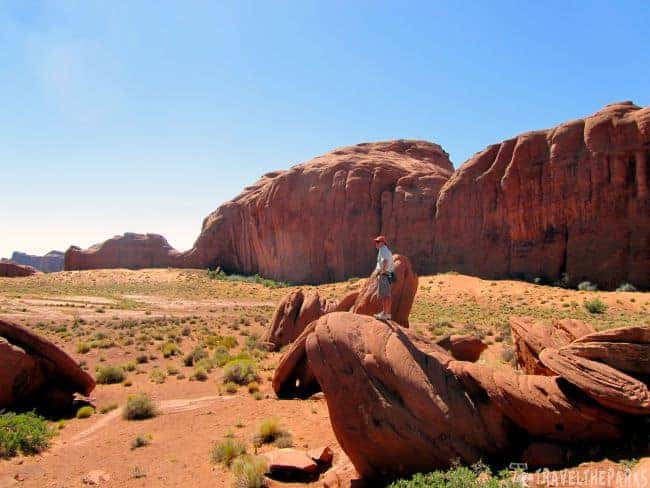
Stop #8: Beholding the Incredible Eye of the Sun: Monument Valley’s Iconic Rock Formation
We were not prepared to witness a truly awe-inspiring sight of the incredible eye of the Sun rock formation. This natural wonder, with its striking resemblance to a giant eye gazing upon the desert landscape. It is a cave type natural arch eroded in DeChelly sandstone. The Eye of the Sun holds deep symbolism and spiritual significance in the Navajo culture. According to Navajo beliefs, it represents the watchful eye of a higher power, an ever-present guardian overseeing the land and its people.

Here you will find 700-year-old images of bighorn sheep in a niche below Eye of the Sun. Larson told us he had hiked these valleys since childhood, and it was obvious. He knew every inch and every detail of the amazing history of this land. This beautiful place came alive to us as we squeezed through cavern walls, climbed over sandstone mounts, and sat in a historic cave used by the Natives over 4000 yesterday ago. We learned about the significance of native plants and wildlife. We truly felt connected and privileged to have been immersed in the land and culture of the Navajo.
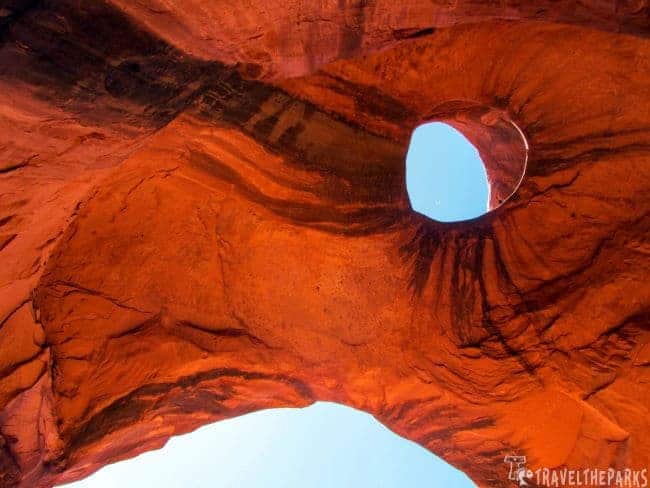
Stop #9: Immersing in the Enigmatic “Ear of the Wind”
The “Ear of the Wind” provides a fascinating acoustic phenomenon that must be heard to be believed. As the wind passes through the narrow gaps and channels of the formation, it produces a symphony of gentle whispers, murmurs, and ethereal sounds. It is a pothole natural arch eroded in red-stained sandstone. It is one of several natural arches on the tour. The red sandstone contrasts nicely with the dead tree which frames the arch. The stories and myths that turn rocks into something a bit more than red stone make these rocks and vistas even more awe-inspiring.
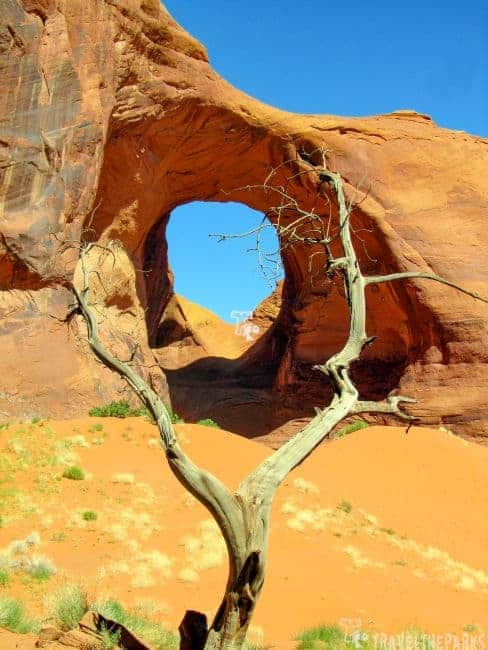
Stop #10: Immersion in Navajo Culture: Experiencing an Authentic Navajo Hogan
The word Hogan (Hooghan) literally means “place home, ” combining the meaning of “home” and a “sense of place.” The Hogan is the traditional home of the Navajo people. This basic structure lacks electricity and running water. In addition, it provides shelter against the elements, such as whipping winds, summer heat, and winter cold.
There are two types of Hogans represented. The female Hogan has nine support poles to represent the nine months it takes for a woman to carry a child; has a rounded dome roof shape, the male Hogan has four support poles to represent the four points on the compass and is more conical shaped. Sweat Lodge, used for ceremonies and meditation, is next to both Hogan structures.
The circular Navajo Hogan, built with wooden logs and layered with mud or bark, showcase the ingenuity and craftsmanship of the Navajo people. Each Hogan’s distinctive design tells a captivating story.
Stop #11: Surrender to the Magic: The Big Hogan Flute Experience
We approached the last leg of our journey with a stop at the BIG HOGAN. It is a natural arch carved in the DeChelly sandstone. Big Hogan is a mystical place with incredible acoustics. It is impossible to truly prepare yourself for this truly enchanting encounter. We make the most of the isolation, leaning back against the rocks. The enchanting tunes resonate within the Hogan’s sacred walls, creating an atmosphere of tranquility and peace.
Larson plays the native American flute beautifully (self-taught). Guided by his skilled hands and heartfelt expression, this is a healing ceremony. The total experience renewed us and redirected us. You can discover the relationship between the natural world and its spiritual presence and power to awaken us to wholeness. We let the soothing sounds carry us away. It left us with a deeper sense of harmony and connection to the remarkable landscape of Monument Valley.

Stop #12: Accepting the Spirit of “The Yei Bi Chei”
While totem poles are traditionally carved from wood by Northeastern clans, this 450-foot sandstone spire is a striking example of how natural erosion can sculpt rock formations. Over time, the relentless forces of wind and water have whittled away at the plateau’s surface, creating these stunning natural carvings that resemble a towering totem pole.
These iconic figures, deeply rooted in Navajo mythology and culture. They hold a significant place in the hearts of the Navajo people. “The Yei Bi Chei” represents supernatural beings in Navajo mythology. Visualize dancers emerging from a Hogan. These masked figures are intermediaries between the human and spirit realms, associated with Navajo healing, protection, and blessing ceremonies. By witnessing their presence, one connects with the clan’s profound spiritual traditions and ancient narratives.

Stop #13: Gazing Through the North Window:
As we neared the end of your expedition, we did not miss the chance to marvel at the magnificent North Window. This natural rock formation resembles a colossal window. The naturally carved landscape offers a breathtaking vantage point to admire the valley’s beauty. The “North Window” provides unrivaled views of Elephant Butte. Cly Butte, named after a renowned Navajo medicine man, stands to the right. The Navajo refer to it as “Left.”. They bury him at the foot of the formation The Thumb is a free-standing spire apart from Camel Butte. This formation also looks like a cowboy boot. WE let the North Window be a reminder of the remarkable beauty and enduring spirit of Monument Valley. It left us with memories that will last a lifetime.
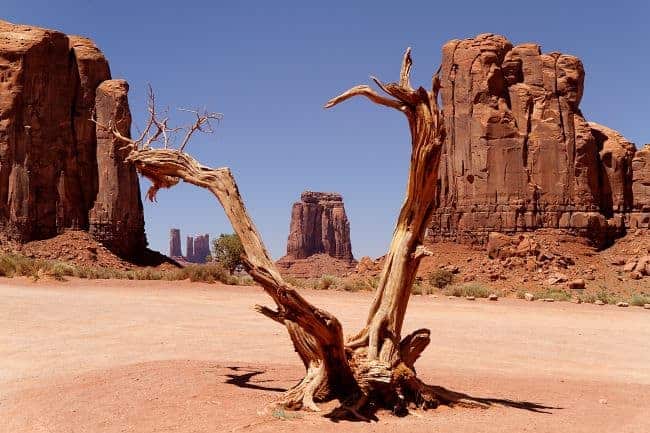
Stop #14: Unveiling the Wonders: Stagecoach, Bear and Rabbit, and Castle Rock
Stagecoach, Bear and Rabbit, and Castle Rock – three formations at the center of Monument Valley. We could also see the Big Indian, Brigham’s Tomb and King on his throne from the valley floor.
The Stagecoach formation resembles an old-fashioned stagecoach, evoking images of the Wild West era. With its striking resemblance to a horse-drawn carriage, this rock formation transports you back in time, allowing you to imagine the pioneers and adventurers who once traversed this rugged landscape. The Bear and Rabbit formation is a testament to the playful imagination of the rocks. This remarkable resemblance of these formations to the beloved animals brought us a touch of whimsy.
Castle Rock stands tall and proud, resembling a majestic castle rising from the desert floor. Its imposing stature and rugged beauty make it a true highlight of Monument Valley..

Monument Valley travel guide Navajo Spirit Tours: A Journey of Cultural Connection and Reverence
As our unforgettable encounters with Navajo Spirit Tours ended, it was time to reflect upon the profound impact of this cultural experience. Larson Homer shared his personal history of his childhood, spending time with his grandma in her mud hogan. HIs sacred stories, legends, and ancestral wisdom passed down through generations. Hearing him play his pipe in the Big Hogan with its magical echoes was an inspirational experience.
By listening to these stories, you have gained a profound appreciation for the oral traditions and the cultural significance of Monument Valley. We did not mention his skill at maneuvering the vehicle over rocks and dunes – all made this an unforgettable experience. Navajo Spirit Tours was worth every penny. Stay away from the many tour guides in the parking lot of the Visitor’s Center and book Navajo Spirit Tours well in advance.

Final Thoughts on Spending A Magical Day in Amazing Monument Valley
Spending a day in Monument Valley allows you to witness the captivating beauty of the American Southwest, immerse yourself in Navajo culture, and create lasting memories of this iconic destination. Monument Valley really is a special treat. This has to be one of the best thought provoking tours we have ever had the pleasure of taking. That is why I believe Monument Valley is the perfect Northern Arizona road trip destination. Adding this valley to your western parks trip is easy. Its proximity to Colorado, Utah, and New Mexico makes it a great addition to your travel itinerary.
Sadly, this was the end of our tour of Monument Valley. Today we had to change our plans because of a detour on Hwy 89A from a landslide. Luckily, the Cameron Hotel and Trading Post have a room available for the evening. Our drive is about 2.5 hrs. Next stop Grand Canyon National Park-South Rim.
Have you been to Monument Valley? What was your experience? Share with us in the comments below. We would love to know about your journey.



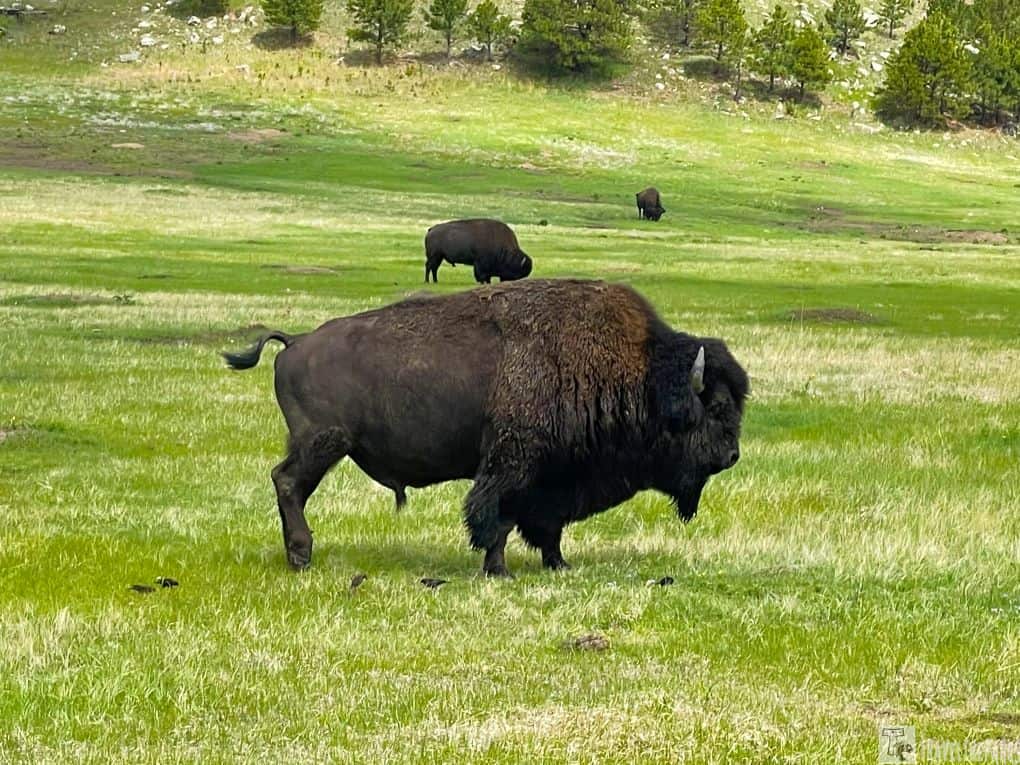

Eric Harris
This was your best blog yet. IMHO.
Please add Death Valley/Mount Whitney to your future plans (include movie road). I think the entire eastern side of the Sierra Nevada’s would be interesting for you.
wnorton
Thanks you are my #1 fan!!
Mickey Jay
Would be great if I could print out the text to take with me. However, with the pics it is 45 pages !!! Yikes. No can do.
Travel the Parks
There is a lot to see and do in Monument Valley. You can always send us a message on instagram or facebook and I can get just the text for you. It’s good to know it helped you to plan your trip. WE cannot wait to go back, maybe winter next time.